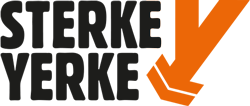During the preparations for the Sterke Yerke III in 1979, agreements were made with the Waddenvereniging to sail the Rhine and the Wadden Sea with the raft. With the aim to bring these two polluted waters under the attention.
In May of that year, the raft in the cargo hold of the inland vessel from Rienk Zwaga to Bonn was shipped in Germany for the first part of the Rhine-Wadden environmental project. In three days they let the raft down the Rhine to Rotterdam. On the way visits were made to German and Dutch authorities to discuss the environment and pollution of the Rhine.
From there over the North Sea to the Wadden Sea for the continuation of the environmental trip to the Lauwersmeer, Eemshaven, Delfzijl and some places in Germany and the German Wadden Islands. A special bottle plan has been developed for the environmental project. 500 empty Bokma bottles, filled with a layer of sand and a red reply card have been thrown overboard in the Rhine and 500 bottles at Hoek van Holland. The finders of the bottles were requested to send the reply card with the location and date to the foundation.
Downstream on the Rhine and IJsseloevers and on the coast of South and North Holland, the Dutch and German Wadden Islands as well as the German west coast above Cuxhaven, 386 bottles were returned. After completion of the Rhine-Wadden environmental project, the raft in Harlingen was further prepared for the transatlantic voyage, including the installation of a VHF radio and a short and medium wave transmitter.
The crew of the Sterke Yerke III (hereafter: S.Y.) consisted of: Guus Schweigmann, skipper, b. 1952 (3rd mate, Grote Handelvaart), Chris Schweigmann (de Muk), steward, b. 1954 (textile seller), Frits Riemersma, environmental researcher, b. 1951 (student biology) and Leo van der Ploeg (eel), rigging, b. 1955 (temporary employee).

